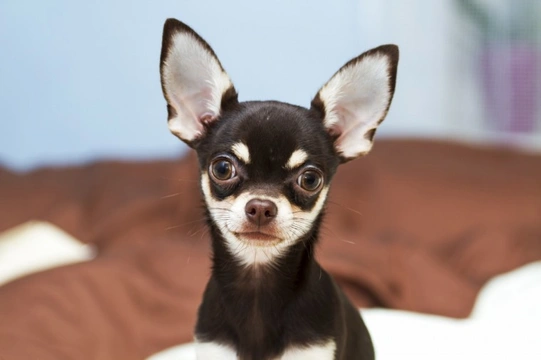
Chihuahua inter-variety coat mating now permitted by the Kennel Club
The Chihuahua is a very well known and notable dog breed for a great many reasons, not least that they’re the smallest breed of dog in the world. Their small size makes them hugely versatile too and opens up the possibility of dog ownership to people who might not otherwise be able to own a dog due to space restrictions, as well as of course helping to ensure their enduring cute-appeal.
The breed also has some disadvantages too (as is the case for all pedigree dog breeds) and one of these is a breed propensity to being somewhat fragile as a result of their small size, plus a few hereditary health conditions that are spread across a reasonable number of dogs of the breed too.
The fact that any dog breed only has a limited level of genetic diversity to it is a problem in terms of limiting the spread of hereditary health conditions without introducing new ones, but outcrossing to other breeds in order to increase genetic diversity does of course result in the production of non-pedigree litters.
However, the Chihuahua dog breed as a whole is itself further divided into two separate and unique breed categories again, further reducing the level of available genetic diversity within the breed, and this division is made on the basis of coat types.
Chihuahua coat types come in two variants, which are called smooth coated and long coated respectively. What this effectively means is that a smooth coated Chihuahua has short fur and of course that a long coated Chihuahua has long fur; and each of the two types are classed as separate breeds for Kennel Club registration purposes, which is reasonably unusual as few breeds are divided entirely in this way for registration purely on the basis of coat.
This also means that smooth coated Chihuahuas and long coated Chihuahuas cannot be mated in order to produce pedigree puppies; because they’re classed separately. Ergo the crossing of a pedigree smooth coated and a pedigree long coated Chihuahua would produce a litter that would be ineligible for Kennel Club registration.
Another issue that separating the two coat types so definitively like this causes is that it effectively divides the breed population in half, halving the genetic diversity of mating partners available for any given breeding match.
However, the Kennel Club announced in June 2020 that from now onwards, inter-variety mating will be permitted within the Chihuahua breed in the future.
This article will outline what this means for Chihuahua breeders, why the decision has been made, and how it should help to improve breed health. Read on to learn more.
Why has the Kennel Club moved to permit inter-variety mating in the Chihuahua?
The Kennel Club considered and ultimately approved inter-variety mating within the Chihuahua breed at the request of the Chihuahua Breed Health Coordinator. This request was made on behalf of the ten individual Chihuahua breed clubs in the UK, which in turn, polled their memberships to ask whether they thought inter-variety mating should be permitted as standard, or only with special permission given on an individual basis.
The majority consensus was to permit inter-variety mating as standard, which was then approved by the Kennel Club.
How will inter-variety mating options help Chihuahua breed health?
Permitting inter-variety mating effectively and more or less instantaneously increases the size of the viable Chihuahua breed population from which mating matches can be made, providing more options for breeders in terms of mating matches. This increases the potential genetic diversity within the breed as a whole, which will help to sustain the breed population for the future and reduce the overall coefficient of inbreeding for both the smooth and long coated breed types.
Currently, the coefficient of inbreeding percentage for the smooth coated Chihuahua is 5.7%, and for the long-coated Chihuahua, 3.5%.
What do inter-variety mating options mean for Chihuahua breeders?
The option of inter-variety mating means that Chihuahua breeders have a much larger range of dogs to be able to choose mating matches from, to increase the genetic diversity of their breed lines whilst still ensuring the resultant litters are eligible for pedigree registration.
It also means that those who specialise in one coat variant (as is the case for most breeders, as until now crossing the variants meant the pups would be classed as non-pedigree) can and if they choose to mate inter-variety dogs, will, produce pups with the potential for both coat types.
What type of coat does crossing a smooth and a long coated Chihuahua produce in their puppies?
This is something of a lottery! Crossing a smooth coated Chihuahua with a long coated Chihuahua will result in a mixed litter in which there will usually be a fairly even split between long and smooth coated pups, although this will of course vary from case to case.



